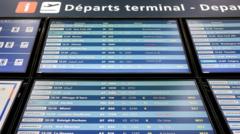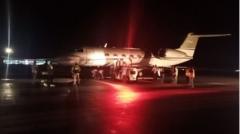On March 21, 2025, Heathrow Airport, one of the world's busiest international travel hubs, faced an unexpected shutdown that has triggered a massive logistical crisis. Handling around 1,300 flights daily, Heathrow sees nearly six million passengers and more than 130,000 tons of cargo monthly. When the airport ceased operations early Friday, a staggering 120 flights were already en route to its runways.
Many affected passengers found themselves rerouted to alternative airports. Some flights found a home at London Gatwick, while others landed in cities such as Birmingham and Manchester. Notably, a British Airways flight from New York diverted to Reykjavik, and a Japan Airlines flight from Tokyo ended up in Helsinki. In Taipei, the only flight scheduled for Heathrow that day turned back mere minutes after takeoff, highlighting the widespread impact of the disruption.
"The situation involves a million moving pieces, as everyone tries to find their way," said Ian Petchenik, communications director at Flightradar24. With major airlines heavily reliant on Heathrow, the ripple effects of the closure were felt globally. Travelers struggled to secure hotel accommodations and updated itineraries amid mounting uncertainty about when regular operations would resume.
London officials anticipate that the fallout of the airport’s closure will last several days, significantly affecting hundreds of thousands of journey plans. Such a prolonged disruption is virtually unprecedented in recent history, with the only comparable incident occurring in 2010 during the volcanic eruption in Iceland, which halted over 100,000 flights.
Amid this dilemma, travelers must navigate a maze of rebooking schedules and shifting travel routes, underlining the crucial role played by major transit hubs in the interconnected air travel network. As the situation evolves, the aviation community watches closely, bracing for what comes next.























